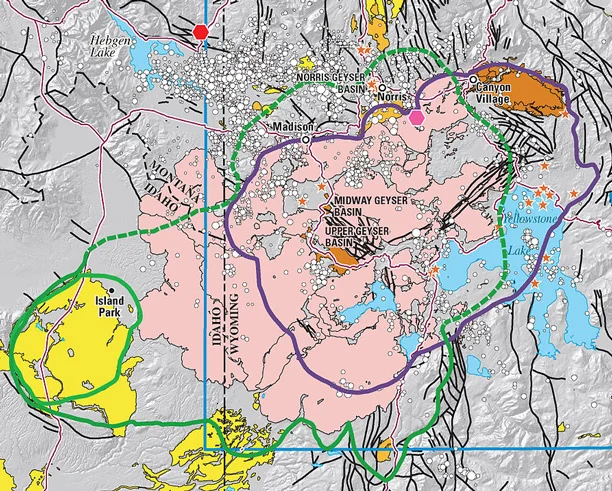The Yellowstone Caldera is a volcanic caldera located in the Yellowstone National Park in the northwest of the United States. After the popular scientific documentary series “Horizon” on BBC used the term “supervolcano,” this caldera is often referred to as the Yellowstone Super Volcano.
The caldera is situated in the northwestern corner of Wyoming, where the majority of the national park is located. It spans approximately 55 km by 72 km, as determined by studies conducted in the 1960s and 1970s by geologist Robert Christiansen of the United States Geological Survey. Thus, it covers about a third of the national park’s area.

(Photo: Wikimedia Commons Public Domain)
Similar to Hawaii, Yellowstone is located above a hotspot, where hot molten mantle rock moves towards the surface. Today, the Yellowstone hotspot is covered by the Yellowstone Plateau, and in the past, it helped form the eastern part of the Snake River Plain through a series of major volcanic eruptions. The observed movement of the hotspot is east-northeast, while the North American Plate moves in a west-southwest direction over the stationary hotspot.
The ruins of the Yellowstone Super Volcano’s crater were only discovered in the 1960s through satellite imagery. It was revealed that a massive magma chamber still exists beneath the crater to this day. The depth of the chamber exceeds 8,000 meters, with temperatures inside surpassing 800 °C. This heat contributes to the thermal springs, releasing steam, hydrogen sulfide, and carbon dioxide from underground.
Feeding the Yellowstone volcano is a massive plume – a vertical flow of solid mantle rock heated up to 1600 °C. As the plume nears the Earth’s surface, some of it melts into magma, giving rise to geysers and mud pots. In cross-section, the plume resembles a 660-kilometer column with lateral extensions, expanding upward in a funnel shape. Its two upper branches lie directly beneath the national park’s territory, forming a magma chamber with a depth of 8-16 km below the Earth’s surface. Over millions of years, the North American continental plate has shifted relative to the plume, causing the formation of new calderas and subsequent eruptions time and again.